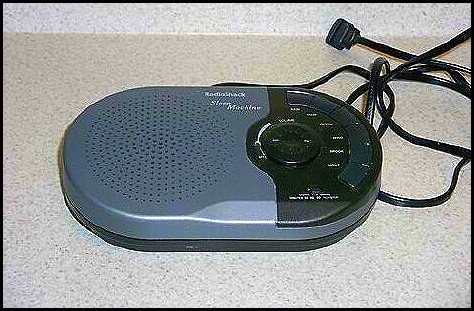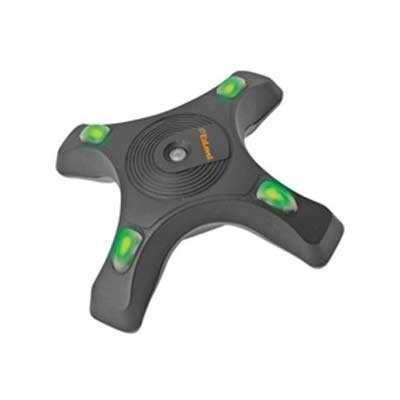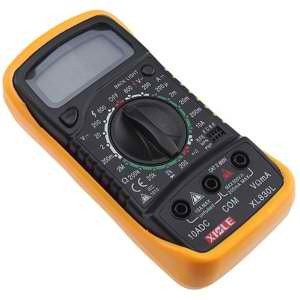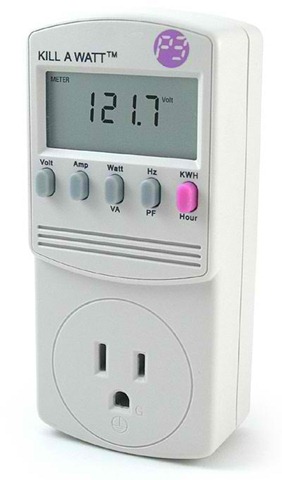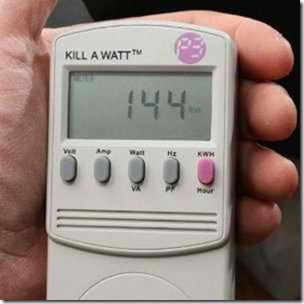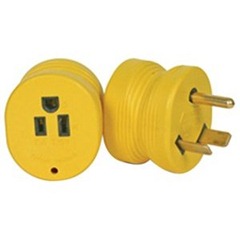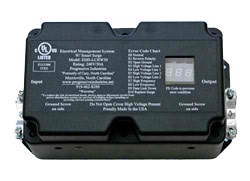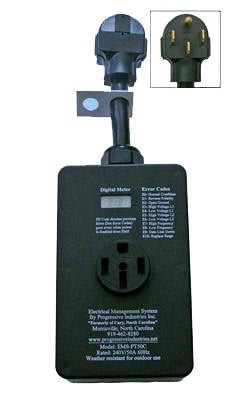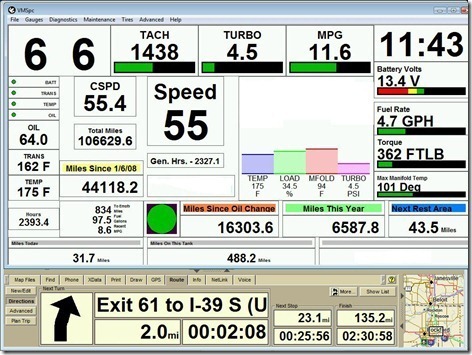I am purposefully stealing this series of posts from here : Our rv adventures because I want to save all of them in one spot. If you read these you will find other links to his other posts and those of Nick Russel who I follow as he is just a really good writer about RV adventures and daily things that we deal with. Maybe some of it is my desire to do the same or need to step out of my current little boxed in life to see what others are capable of. I am planning and will get there in a couple of years once we get finances in place, commitments cared for and several other things that stand in our way. Maybe I will get the time to attend Greg’s seminars or Nicks gathering? It is always good to study and re-study things that we all seem to forget or overlook. – WD0AJG
______________________________________________________________________________________________________
It seems RV’ers are always complaining about noise in RV parks, a neighbor’s early morning departure, the almost-obligatory nearby train tracks or Interstate, etc.
The solution for this is a white noise machine. Jan and I have used one for years, even in our Sticks & Bricks home. For many years I worked night shift at NASA-JSC in Houston and slept during the day, and this did the trick.
White noise is the sound of a waterfall, or rain, or the ocean. It’s best described as a ‘rushing’ sound, and it does a very good job of masking out other sounds.
We have one like this that we bought from Radio Shack years ago, although they no longer sell it.
But you can find them just like this on eBay for less than $10. Or you can find them on Amazon. Just search for ‘white noise generator’.
This unit has six different while noise types: Rain, Train, Ocean Waves, Wind, Babbling Brook, and Night Time. We use the Rain setting because it’s smoother with no extra sounds like clickety-clack, waves, gurgling, or crickets..
Give it a try for a better night’s sleep.
——————————————————————————————————————–
Now to leveling.
I’ve had really good luck using one of these.
It doesn’t matter which direction you have it turned, as long as you keep the arms parallel and perpendicular to your coach.
All you have to do is place it on the floor and press the center button. If one of the lights flashes red, your rig is low in that direction. So all you have to do adjust your levelers until all the lights are green.
Done. And after a few minutes, the leveler turns itself off automagically.
The only thing you have to be careful of is to not drop it. That can throw the calibration off, and you will have to recalibrate it. And to do that you have to have a level surface.
——————————————————————————————————————–
Things Every RV’er should have:
The last couple of days I’ve talked about things RV’ers need, and this is another one.
A VOM, or Volt-Ohm Meter. Every rig should have one, or more. And they’re not expensive.
This one costs about $5 on Amazon.
They’re good for a myriad of uses. Checking for a blown fuse, checking to see if a light bulb is bad, checking to see if voltage is getting to a switch or socket. I even used one under the rig to find a broken wire on my starter when my Cummins diesel wouldn’t crank. I also used one to fix Nick Russell’s broken water heater.
Get one today!
Measuring Stuff with a Multimeter
If you go to YouTube and type in ‘Using a Multimeter’ you will find a bunch of instructional videos on VOM use. Check it out.
_______________________________________________________________________________________________________
Today’s gadget is the Kill A Watt.
There is a 3-prong AC plug on the back of the unit, and using a short extension cord, if necessary, plug the Kill A Watt into a wall plug. You can then plug any device into the socket on the front.
Then using the buttons on the front you can check the voltage coming into the KAW, the amps the device is pulling, and the watts used. You can also measure the kilowatt hours (KWH) the device is using just like the power company’s electric meter at your sticks & brick.
Another good use is to check the AC frequency of your power when using your generator. It should be 60 Hz, but how would you know?
Nick and I used ours earlier this year at the Gypsy Journal Rally in Yuma. We had to live on 20 amps for a week before the rally started, and by plugging the rig power into the Kill A Watt we could monitor how many amps we were pulling and how much more we could use without popping the breaker. Very useful.
You can get your own Kill A Watt from Amazon for less than $20.
——————————————————————————————————————-
And now for another installment of . . .
Things Every RV’er should have:
You’ve probably all seen one of these, but may not have know what it’s for. It’s a AC Receptacle Tester, and should be used any time you plug your rig into a 20 or 30 amp AC receptacle.
Of course if you plug it into 30 amp, you’ll need to use a 30 to 20 amp adapter like one of these.
But however you plug it in, it will tell you if your outlet is wired correctly and safe to use. Depending on the age of your rig, and how the outlet is wired or mis-wired, it can be dangerous to plug into an outlet that has the hot and neutral wires reversed. There can also be a similar problem if your outlet has a open ground.
Either of these conditions can possibly cause the metal in your rig to become hot and give you a shock if you touch it while grounded.
The tester is very simple to use. Just plug it in and check the 3 lights on the end.. If you have 2 yellow lights, you’re good to go. Any other pattern of lights indicates a problem. And the light code is printed on the side of the tester so It’s easy to know what’s going on.
If no lights are visible, then the outlet is dead. Used this way inside your rig, it makes it easy to find the popped GFCI (Ground Fault Circuit Interrupter) or circuit breaker controlling the dead outlet,
While parking people at the Gypsy Journal Rally in Celina, OH last month, I used one to check the outlets as I parked people. I found 3 outlets that were wired incorrectly and reported them to the fairgrounds.
You can get a tester from Amazon for less than $8. AC Receptacle Tester
And you can also find them at your local hardware store.
If you don’ t have 30 to 20 Amp Adapter, you can get one from Amazon also.
——————————————————————————————————————-
And now for another installment of . . .
Things Every RV’er should have:
As a follow-up to yesterday’s post about testing your power connections using an AC Receptacle Tester, todays post will tell you how to not only test your power, but protect your rig at the same time.
To do that you need one of these. a Progressive EMS (Electrical Management System).
They have permanently mounted units like this one,
and portable, hang-on-the-pedestal models like this one.
Available in both 30 and 50 amp models, these units monitor your incoming shore power three different ways.
First, after you plug into the pedestal and flip the breaker on, the unit cycles through a number of tests on the incoming power, including voltage, frequency, and all possible mis-connections, i.e. open ground, open neutral, etc., before it applies power to the coach.
Second, it monitors the power all the time to be sure that the voltage levels stay over 104 volts, and under 132 volts. Voltage levels outside this range can damage your rig and your appliances.
Third, it acts as a surge suppressor to protect your rig from voltage surges and nearby lightning strikes, just the surge suppressor power strips you plug your computers and other electronics into.
I bought my Progressive EMS from Daryl Lawrence of Lawrence RV Accessories at Nick Russell’s Gypsy Journal Rally in Casa Grande, AZ, a month after we started our full-timing life. And in the last four years I’ve lost track of the times that the unit alerted me to problems with the power at the pedestal.
Once, on Cape Cod in 2009 the EMS gave its life in a shower of sparks to protect our rig from over 400 volts. And even though it was a weekend, Progressive overnighted me a new board to get my EMS going again. Now that’s service!
————————————————————————————————————
Things Every RV’er should have:
Today I’m going to tell you about a service, and not a gadget. It’s Amazon Prime, a special service from Amazon.com, and we find it invaluable while traveling full-time.
The bad news is that it costs $80 a year, but the good news is that if you order a lot, or want to order a lot from Amazon it will save you money.
But in our case, we also like the time it saves us. Time, as in how long it takes to order and receive something.
And Amazon sells pretty much everything.
Need a genuine Cummins Fleetguard Fuel Filter for your diesel pusher? They’ve got it. Need a giant 50” black spider for Halloween? Take a look. Need diabetic test strips? Just place your order.
How about a Cisco Ethernet 8-port Switch? You’re good to go. Or maybe a Valterra black tank waste valve for your RV? Well, you get the picture.
But the fact that they have all this stuff is not the main thing. The main thing is that with Amazon Prime you get 2nd Day shipping FREE on all items shipped by Amazon. And it you want it tomorrow, it’s just $3.99.
I just checked my Amazon account, and so far this year we have purchased 66 items from them. At only $2.00 each shipping charge, that would be over $130 for the year. And it’s pretty much impossible to get anything shipped for $2.
But, for us, it’s not only the free two day shipping, but it’s the fact that it IS only two days. Only occasionally are we in a place long enough to receive something shipped in “3 – 5 business days” like normal shipping. And when we need something fast, there’s the overnight shipping for $3.99.
An example of how this can be useful is a story I read about a guy who lived near the coast of North Carolina during the recent hurricane. A few days before the storm was supposed to hit, he decided to buy a 4000 watt generator, and he also wanted some extra ‘D’ batteries.
But when he went shopping, he found every local store sold out of both. Then he thought about his Amazon Prime. He went online, found the generator he wanted, added in a case of ‘D’ batteries, and placed his order about 4pm that afternoon, selecting Next Day delivery for $3.99 for each item.
At 10 am the next morning, the FEDEX truck pulls up and unloads his generator and his batteries. He said he just wished Amazon sold gasoline too.
Lastly, Amazon recently added over 10,000 movies and TV shows that you can stream to your computer for free with Amazon Prime.
Check it out.
———————————————————————————————
Things Every RV’er should have:
Today’s topic is Aerospace 303 Protectant. As I mentioned above, our friends at dinner with us tonight, Dave and Jean Damon, are vendors for 303, and they turned me on to this stuff a couple of years ago. It’s been used in the aircraft and marine industry for years, but has only recently become widely known in the RV world.
303 is a UV protectant for any type of canvas, rubber, vinyl, latex, leather, fiberglass, or Neoprene. It is especially good on tires to help prevent the cracking and deterioration that shortens the life of your RV tires.
And applied to your awnings, it will increase their life and water repellency, while greatly reducing the fading.
If you can’t catch up with Dave and Jean at a rally, you can get it here on Amazon for Aerospace 303.
———————————————————————————————
Note: now I have been wanting one of these for a long time – maybe this year? – WD0AJG
————————————————————————————-
And now for another installment of . . .
Things Every RV’er should have:
The Silverleaf VMSpc is one of my favorite gadgets. Unfortunately it’s only for you diesel owners, but if you’ve got one, take a look.
The VMSpc consists of a cable that plugs into the diagnostic port under your dashboard, an interface box with a cable that plugs into your computer, and a PC computer program.
The whole system costs about $400, but you can download the software program for free and play with it.
The VMSpc ties into your engine computer and gives you much more accurate information than your coach gauges do, and also gives you some info that you don’t even have gauges for, like horsepower, torque, GPH, turbo boost, and a number of others.
As I said, the Silverleaf VMSpc plugs into the diagnostic port underneath the dashboard and connects to my laptop that sits on the center console when we travel.
In my case I run two programs on the laptop: In the bottom section I’m running Delorme Street Atlas w/GPS. The top section is the Silverleaf display.
The really nice thing about the Silverleaf is you get to design your own panel. You can choose the instruments you want to display, where you want them on the screen, what color they are, and what they say. You can also set alarms so that if, for example, your battery voltage drops below 12 volts, an audible/visible alarm goes off on the screen.
Across the top, left to right, I first have the transmission gear indicator. The left ‘6’ shows what gear is selected on the console. The right one shows what gear the transmission is actually in.
Next, in order, are the tachometer, the turbocharger boost pressure, the instantaneous MPG, and the clock. Down the left side, the first four gauges are alarms for voltage, transmission temperature, water temperature, and oil pressure. Next are numerical gauges for the oil pressure, transmission temp, engine temp, and the total hours on the engine.
Starting from the top of the second column, CSPD shows the Cruise Control Set Speed, next is the total miles on the coach (it had 62511 miles when we bought it), the miles we’ve put on the coach, and the fuel minder. It shows the miles left on this tank, the remaining fuel in the tank, and the recent MPG.
The next column starts with a speedometer. The neat thing about this is that the Silverleaf program allows me to set a modifier on the speedometer.
The tires (295’s) presently on my coach are bigger than the original 285’s. This means my dashboard speedometer is not correct. It reads 51 mph when I’m doing 55, for instance. But by adding a modifier to the gauge, it displays the correct speed.
Next are the generator hours. This lets me track the generator fuel usage at about 1 gallon of diesel per hour.
Underneath that, the green ball means the Cruise Control is set and engaged. If the ball was yellow, it means it’s not engaged, and a red ball means it’s turned off. Just to the right is the miles since my last oil change/filter etc., service.
Next is a vertical bar graph that gives me a instant picture of my engine performance, and below is the miles we’ve traveled so far this year. We’ll probably do another 2-3000 before we get back to Houston right before Thanksgiving.
The right hand column below the clock shows the battery voltage, the fuel rate, the engine torque, the Max Intake Manifold Temp, and the distance to the next rest area.
Lastly, across the bottom is the miles we’ve traveled so far today, and the miles we’ve traveled so far on this tank of diesel.
This last reading, coupled with the fuel used from the Fuel Minder gauge, gives me a very accurate reading on the MPG on this tank. In this case, we’ve gone 488.2 miles and used 52.5 gallons (150 – 97.5) of diesel. This gives me a average of 9.3 mph.
Driving 55 does save gas. From testing, I know that if I drive 65, my mpg drops to between 7.5 and 8 mpg. This difference in miles per gallon saves me about $1000 a year.
Just a note, the fuel usage is very accurate on the Silverleaf because the program actually counts the pulses in the fuel injectors, You can’t get any better than that.
Another neat feature of the Silverleaf is that if you ever get a Check Engine light, just use the Diagnostic drop-down menu at the top of the screen and it tells you the code AND what the code means.
It may seem like a lot of information, some of it not too useful, but it gives me an ongoing picture of my engine’s performance and let’s me quickly see any changes.
I hope this all makes sense. If you have any questions or comments be sure and let me know.
For you gas engine RV’ers, there is a product called Scangauge that will work for you, but it does not use a computer display. Instead it has its own display unit.
——————————————————————————————————————–

